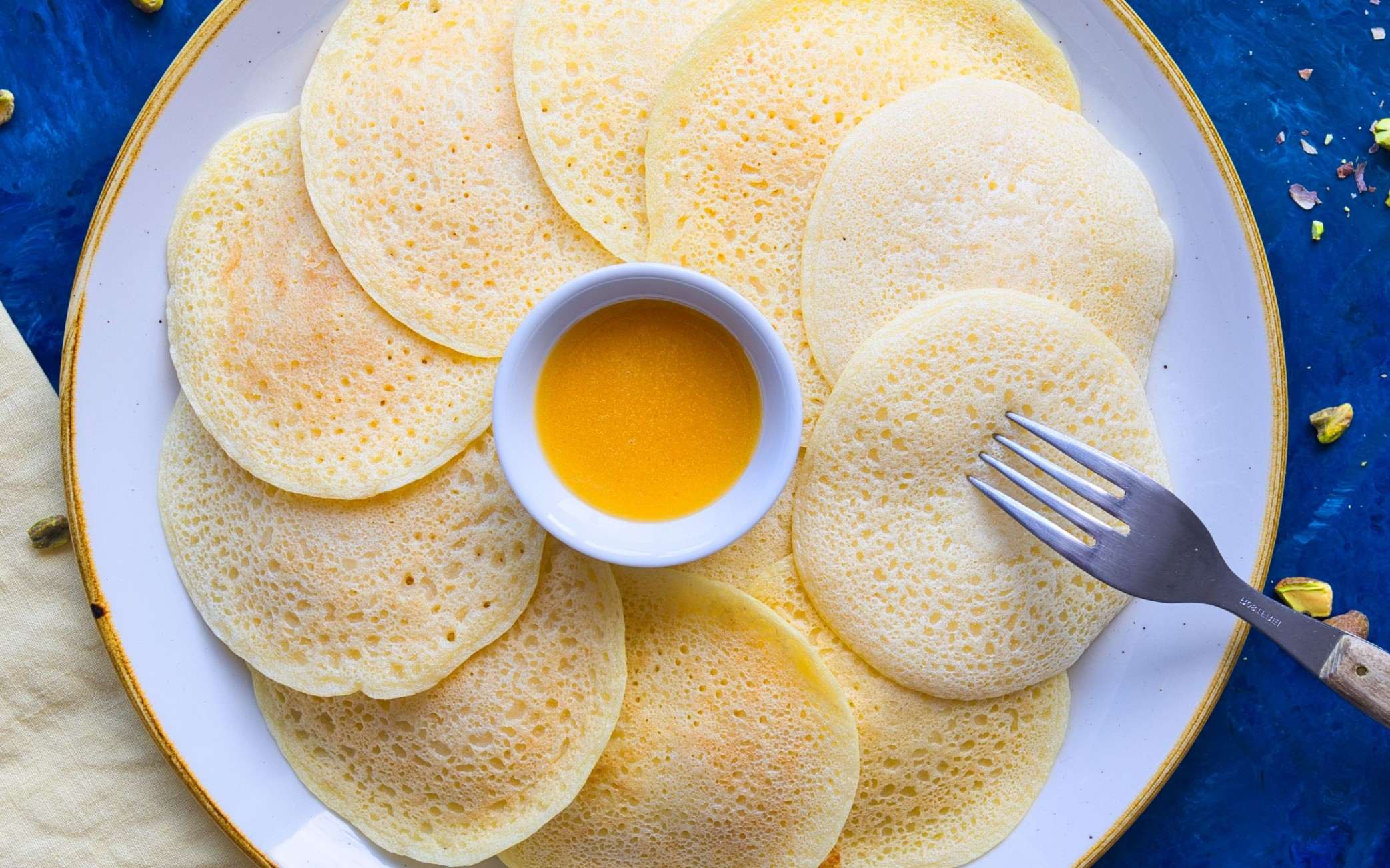
Baghrir, also known as Moroccan pancakes or "thousand-hole pancakes," are a delightful treat enjoyed across North Africa. These spongy, airy pancakes are made from a simple batter of semolina, flour, yeast, and water. What sets them apart is their unique texture, characterized by numerous tiny holes that form on the surface during cooking. These holes make baghrir perfect for soaking up honey, butter, or syrup, making each bite a burst of flavor. Baghrir are often served for breakfast or as a snack, and they hold a special place in Moroccan culture, especially during Ramadan and other festive occasions. Whether you're a food enthusiast or just curious about global cuisines, learning about baghrir will surely add a delicious twist to your culinary knowledge.
What is Baghrir?
Baghrir, also known as Moroccan pancakes or "thousand-hole pancakes," is a traditional North African dish. These spongy, honeycomb-like pancakes are a staple in Moroccan and Algerian cuisine. Let's dive into some fascinating facts about this delightful treat.
Origins of Baghrir
Baghrir has a rich history and cultural significance in North Africa. Here are some intriguing details about its origins:
- Baghrir has been a part of North African cuisine for centuries, particularly in Morocco and Algeria.
- The name "Baghrir" is derived from the Arabic word "baghr," meaning "to bubble," which refers to the pancake's unique texture.
- Traditionally, Baghrir is made during special occasions like Ramadan, Eid, and family gatherings.
- Baghrir is often associated with Berber culture, one of the indigenous peoples of North Africa.
Ingredients and Preparation
The ingredients and preparation methods for Baghrir are simple yet unique. Here's what you need to know:
- Baghrir is made from a mixture of semolina, flour, yeast, and water.
- Unlike typical pancakes, Baghrir batter is left to ferment for a few hours, giving it a distinct flavor and texture.
- The batter is poured onto a hot griddle or pan, where it forms tiny bubbles on the surface.
- Baghrir is cooked only on one side, leaving the top soft and spongy.
Unique Texture and Appearance
One of the most distinctive features of Baghrir is its texture and appearance. Let's explore what makes it stand out:
- The surface of Baghrir is covered with tiny holes, giving it a honeycomb-like appearance.
- These holes are formed due to the fermentation process and the way the batter is cooked.
- The spongy texture of Baghrir allows it to absorb sauces and syrups easily.
- Baghrir is often described as light, airy, and slightly chewy.
Serving and Eating Baghrir
Baghrir is enjoyed in various ways, depending on personal preferences and regional traditions. Here are some common serving methods:
- Baghrir is typically served warm, drizzled with honey or syrup.
- In Morocco, Baghrir is often paired with a mixture of melted butter and honey.
- Some people enjoy Baghrir with a sprinkle of cinnamon or a dollop of jam.
- Baghrir can also be served with savory toppings like cheese or olives.
Nutritional Value
Baghrir is not only delicious but also offers some nutritional benefits. Here's what you can expect:
- Baghrir is a good source of carbohydrates, providing energy for the day.
- The semolina used in Baghrir contains essential nutrients like fiber, protein, and vitamins.
- Baghrir is relatively low in fat, especially when served with light toppings.
- The fermentation process can make Baghrir easier to digest for some people.
Cultural Significance
Baghrir holds a special place in North African culture. Here are some cultural aspects to consider:
- Baghrir is often made and shared during religious and family celebrations.
- Making Baghrir is considered an art, with techniques passed down through generations.
- Baghrir is a symbol of hospitality and is often served to guests as a sign of welcome.
- In some regions, Baghrir is believed to bring good luck and prosperity.
Modern Variations
While traditional Baghrir remains popular, modern variations have also emerged. Here are some contemporary twists:
- Some people add ingredients like saffron, orange blossom water, or anise seeds to the batter for extra flavor.
The Final Bite
Baghrir, with its unique texture and rich history, offers more than just a delightful taste. These Moroccan pancakes, known for their signature holes, are a testament to the region's culinary creativity. Whether enjoyed with honey, butter, or a savory twist, baghrir brings a piece of Moroccan culture to your plate.
From their Berber origins to their role in celebrations, baghrir showcases the blend of tradition and flavor. Making them might seem tricky, but with practice, you'll master the art. Remember, the key lies in the batter's consistency and the cooking technique.
Next time you crave something different for breakfast or a snack, give baghrir a try. You'll not only enjoy a delicious treat but also connect with a rich cultural heritage. Happy cooking!
Was this page helpful?
Our commitment to delivering trustworthy and engaging content is at the heart of what we do. Each fact on our site is contributed by real users like you, bringing a wealth of diverse insights and information. To ensure the highest standards of accuracy and reliability, our dedicated editors meticulously review each submission. This process guarantees that the facts we share are not only fascinating but also credible. Trust in our commitment to quality and authenticity as you explore and learn with us.
